Bamboo and its Properties
Our team believe in projecting spaces that have life, and there is nothing more alive than nature and the connection that can be made through materials that can tangibly be assimilated with the outside. Our vision to create living spaces stems from taking architecture, from a conceptual point of view related to nature, and leading it to create a space that resembles the feeling of either walking on a mountain, with a stepped house (Casa Atalaya) or walking a path totally full of vegetation in an apartment corridor (Landare) thus making any type of project, from an apartment building unified by an artificial cenote (Tsonot), to a beach club in which the context of luxury is fully respected, more natural than material.
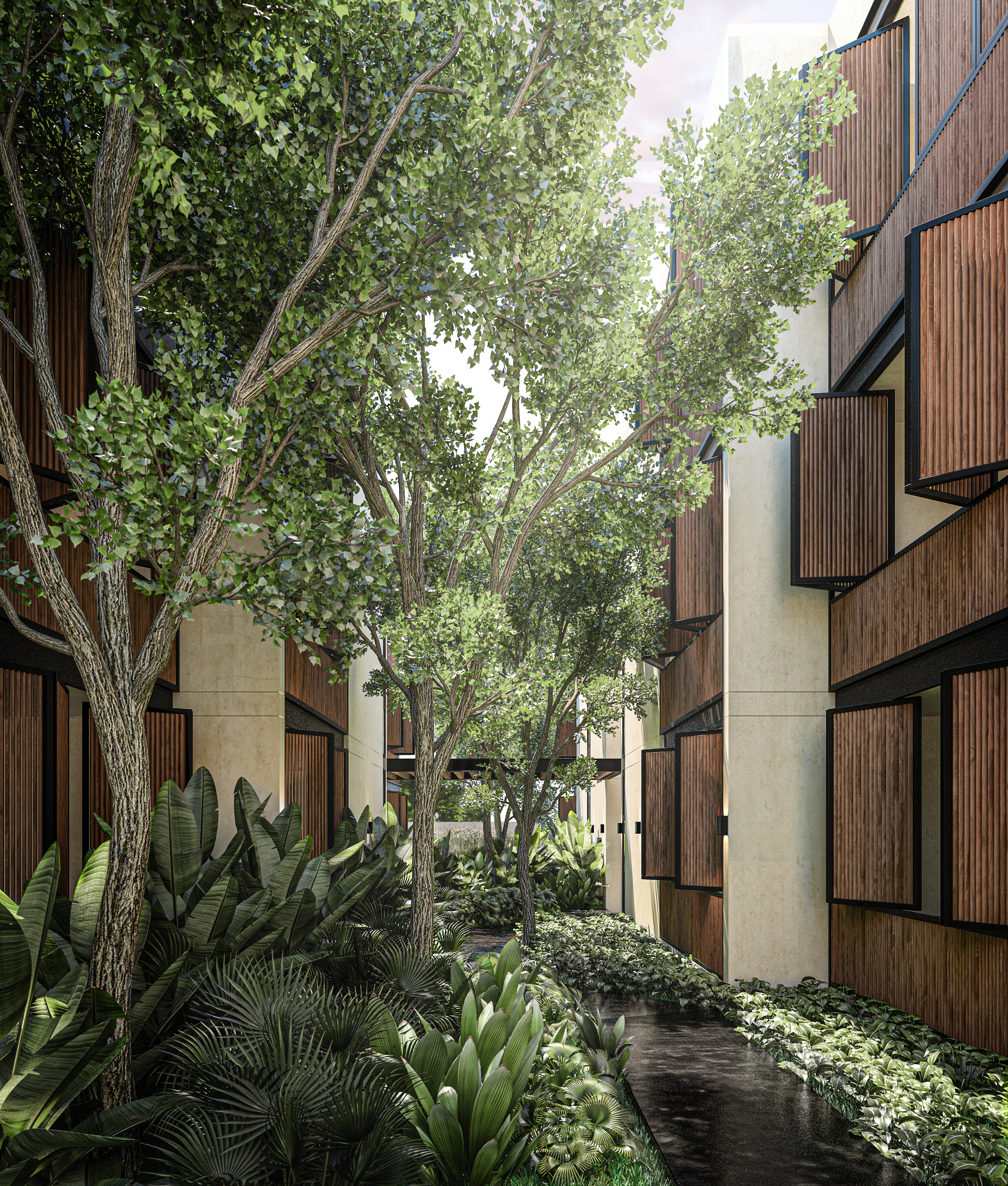
Landare project
Illustration: Arista Cero
By studying nature more, we realized that it does not have right angles and that in its majority has an organic or spiral shapes; And so the idea arose of creating similar spaces, that was also how we found the bamboo, a material that when you know to use it you can create a variety of infinite spaces and even conceptually take the shape of a leaf into a habitable space (Leha).
The characteristics that make this material what it is, are very interesting, the bamboo is known as the vegetable steel because of all the uses it has, such as making columns, beams, doors, foundations, roofs, etc.
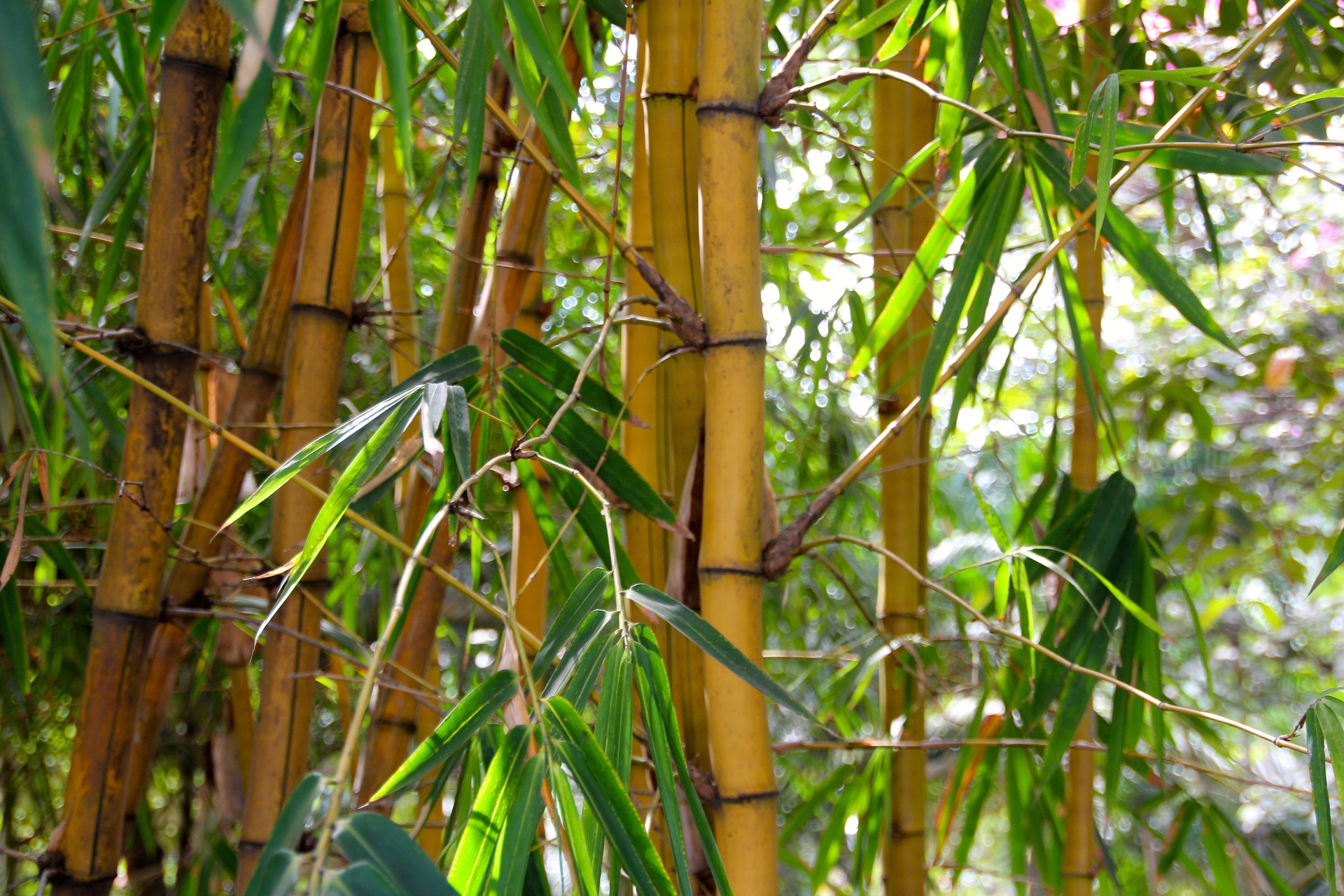
Bamboo
It is a sustainable product since more than cutting it is “pruned” unlike wood, in this way bamboos that are up to 5 years old are removed, leaving the others to continue with their life cycle. The use of bamboo as a substitute for wood means that forests are not lost by cutting them down as opposed to a bamboo forest (Bali Forest) .
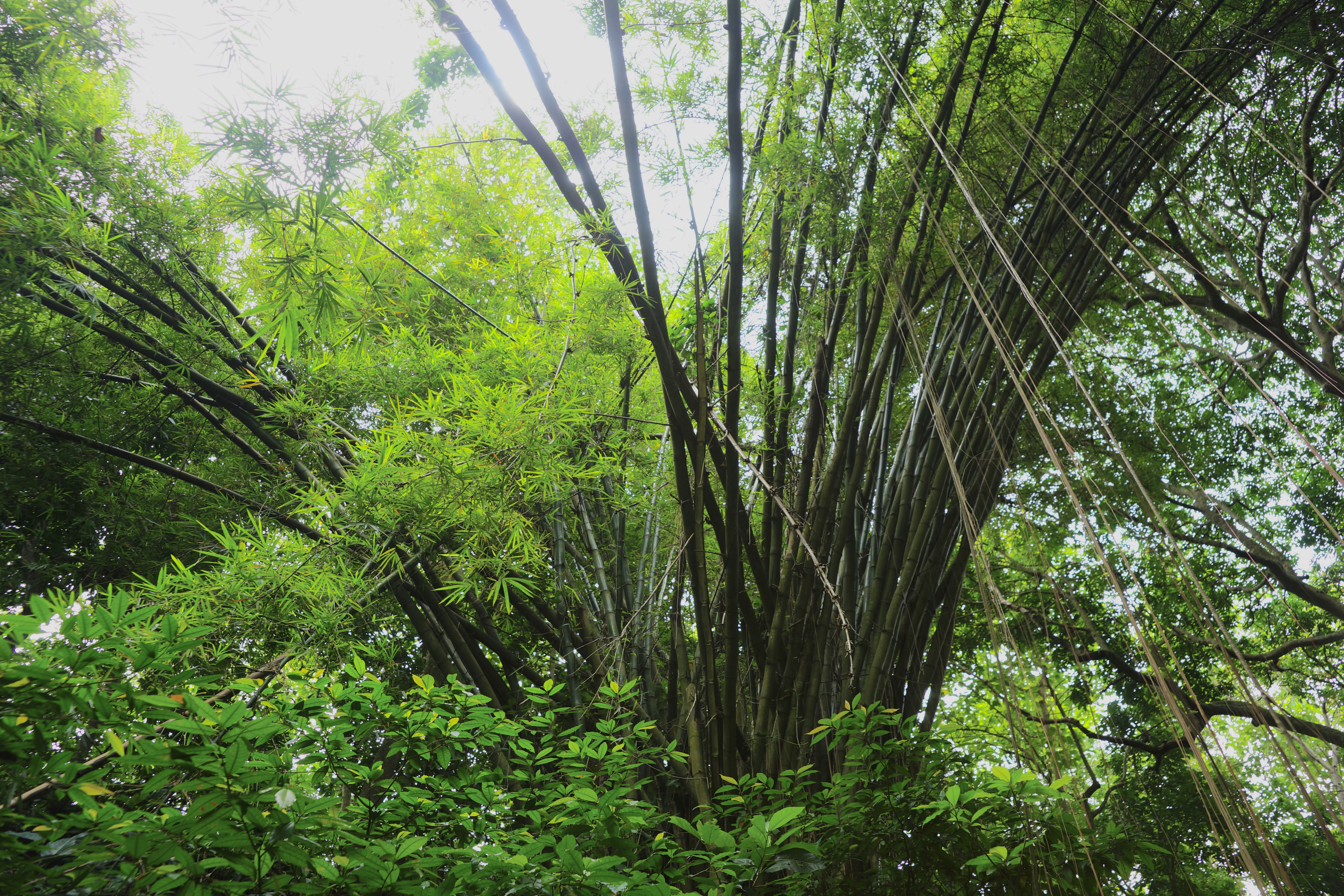
Bali forest
Photography: Dion Hinchcliffe, creativecommons.org
Among its advantages is the abundance of the material, the accessibility, and its price; that’s why nowadays the bamboo is used for technical applications, complex and innovative structures, and that has a low invasive impact. In context, the bamboo will be used not only in tropical spaces, it is and it will be implemented in any project related to our daily life (Nah Chiich).
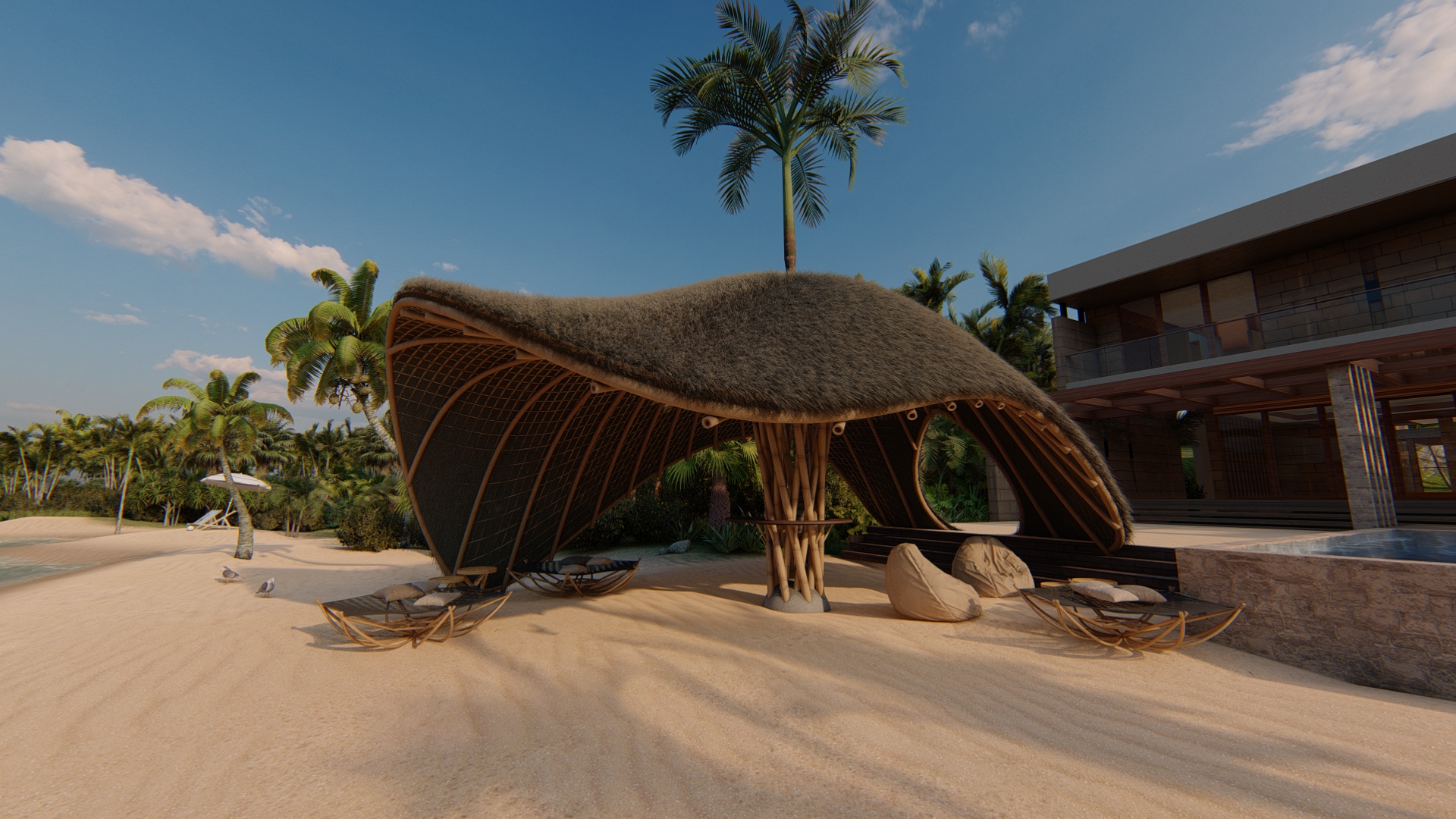
“Leha” formed in its outline by bamboo cans that become the column and the life of the project, and in its center a bamboo embracing a palm tree located on the site.
Illustration: Arista Cero
Cutting the plump bamboo into strips or “cans” is very interesting its flexibility and resistance. With the bamboo you can make curved spaces; you can make circles or ellipses that make up the structure, function and aesthetics of the material.
In this way, using the cans together, by force, an element that works as a column can be achieved that at the same time becomes a beam that through fabrics makes a sacred fractal geometry that works as a cover (Leha) and in the same way domes and organic forms (Talam) can be created to make a space where energy flows.
“Due to all the uses of bamboo it is called vegetable steel”.
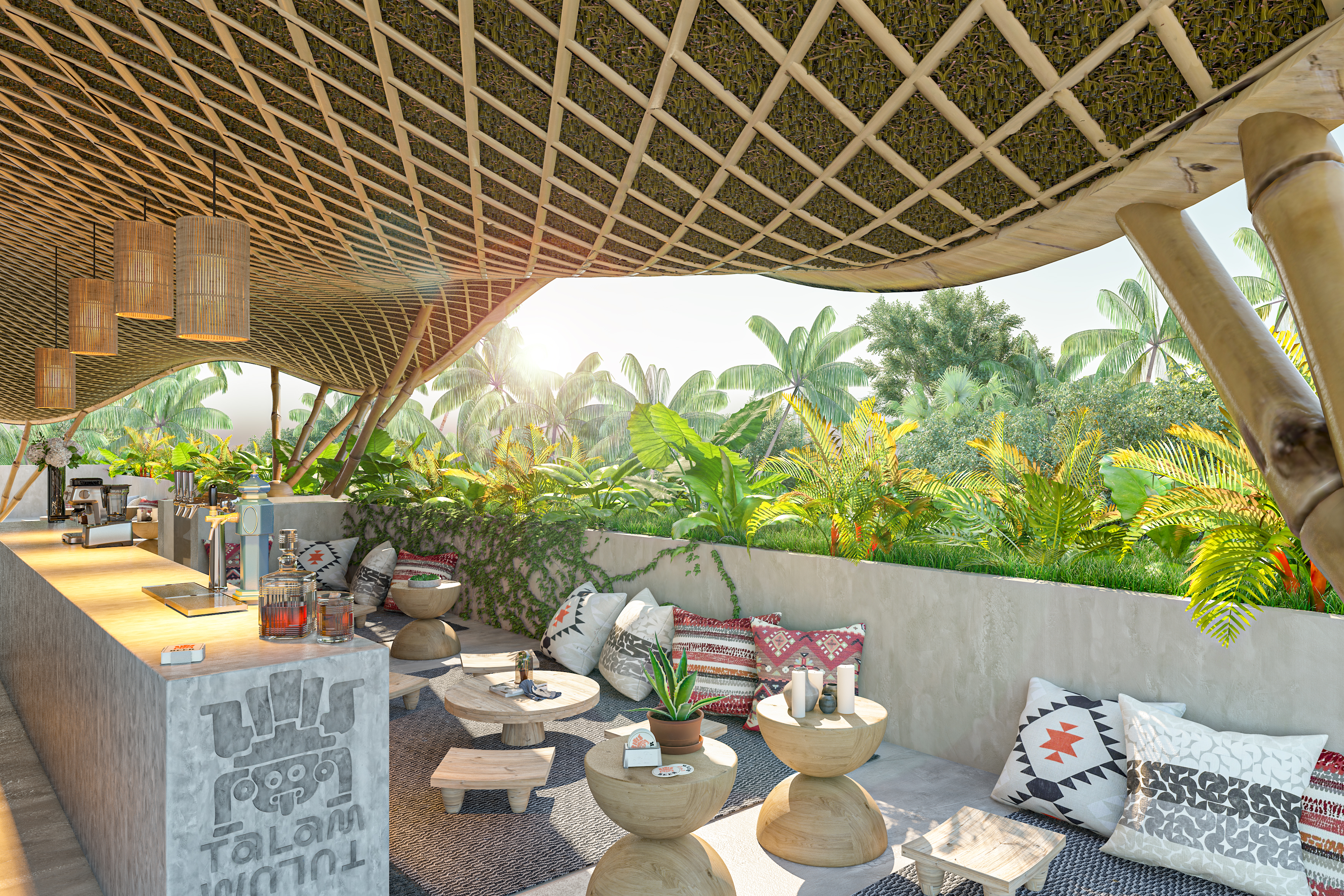
Talam project
Illustration: Arista Cero








